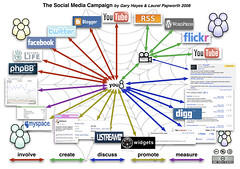Facebook has 699 million daily active users (as of June 2013), but according to Facebook’s own estimate, 80% of them are outside of the United States and Canada. And, although a lot of businesses are on the social network, not all businesses do well there.
What many businesses don’t understand is that Facebook is really a “social” network, where people come to talk and share information. Service businesses rarely make much of an impact and to use any social media successfully it requires dedicated amounts of time and diligence that a business owner either has to put in or should hire someone to do.
The most successful businesses on Facebook fall into these seven categories:
- Retail (well-known stores, odd or unusual products)
- Bars and Nightclubs
- Restaurants
- Big, nationally known brands (Coca-Cola, Nike)
- Sports teams (and a recent article disputed this)
- Actors/Celebrities
- Musicians/Bands
In May of 2013 , the article Maybe You Don’t Need Social Media to be Successful states:
One USA Today report reveals that social media may not be the answer for everyone…About 61% of small businesses don’t see any return on investment on their social-media activities.
In the post, When Small Businesses Shouldn’t Do Social Media, social media and marketing specialist Stephanie Schwab confesses:
As someone who is deeply entrenched in, and very much in love with, social media, it’s very hard to say ‘Don’t do social media.’ But honestly – more and more, I find myself telling some of these entrepreneurs and business owners that social media may not be the most important thing for them to do….
Others point out that there are some huge, successful businesses that don’t use social media at all, Apple being the most unexpected example.
Also, ignoring your target market is one of the biggest mistakes local businesses make. Before jumping into the social media venue, first find where your prospective customers are who are looking for the services you offer.
The Yellow Pages used to be the place to advertise in, but is rapidly being replaced by online directories. There are online Yellow Pages, but again, they are often confusing, and sometimes have incorrect or outdated information.
Ask your current customers to post reviews for you on websites like Yelp, MojoPages.com, and TripAdvisor.com (they now show businesses as well as restaurants). Make sure you list your website in Yahoo Local, Bing Local, and Google Plus (a.k.a. Google Places).
If your business handles commercial services, such as industrial plumbing or cleaning, be sure to get a company page on LinkedIn. LinkedIn is one of the biggest business-to-business networks online today.
Many Chamber of Commerce and other business organizations and local networking groups have websites
and an online business directory for their members. This is an excellent resource for prospective clients, because they will continue to refer you to their friends and colleagues.
And don’t forget about offline marketing. If you can find a charity or other non-profit corporation that is running an event in your area, see if you can be a sponsor. Many of these organizations will list their sponsors in their printed material, signs and banners at the event itself. Or, you can see about sponsoring a local conference or fund-raising event.








